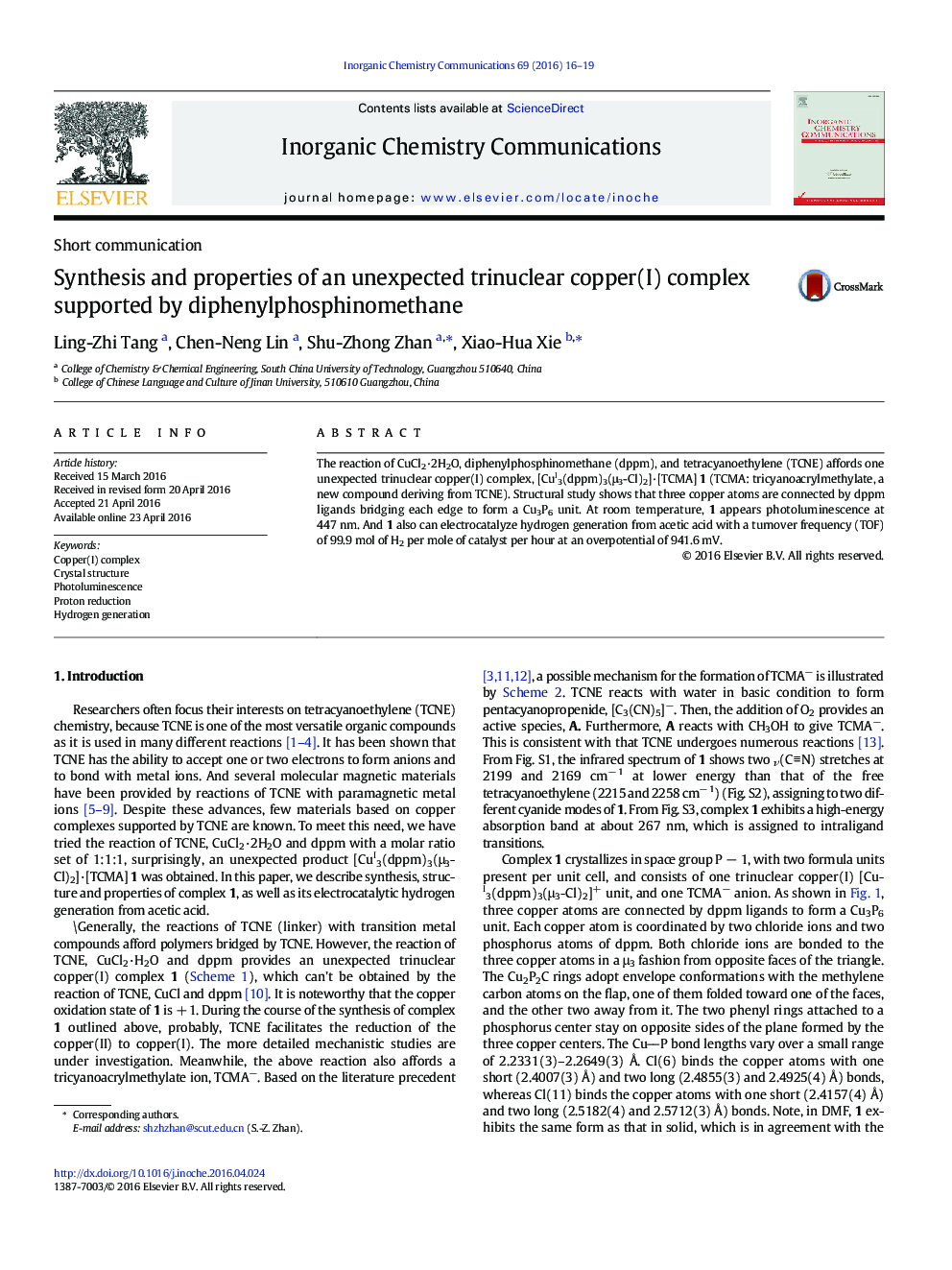| کد مقاله | کد نشریه | سال انتشار | مقاله انگلیسی | نسخه تمام متن |
|---|---|---|---|---|
| 1303151 | 1498921 | 2016 | 4 صفحه PDF | دانلود رایگان |
• Reaction of CuCl2·2H2O, dppm and TCNE affords a copper(I) complex [Cu3(dppm)3(μ3-Cl)2]·[TCMA] 1.
• Three copper atoms are connected by dppm ligands bridging each edge to form a Cu3P6 unit.
• 1 can catalyze hydrogen evolution from acetic acid.
• 1 exhibits photoluminescence behavior at room temperature.
The reaction of CuCl2·2H2O, diphenylphosphinomethane (dppm), and tetracyanoethylene (TCNE) affords one unexpected trinuclear copper(I) complex, [CuI3(dppm)3(μ3-Cl)2]·[TCMA] 1 (TCMA: tricyanoacrylmethylate, a new compound deriving from TCNE). Structural study shows that three copper atoms are connected by dppm ligands bridging each edge to form a Cu3P6 unit. At room temperature, 1 appears photoluminescence at 447 nm. And 1 also can electrocatalyze hydrogen generation from acetic acid with a turnover frequency (TOF) of 99.9 mol of H2 per mole of catalyst per hour at an overpotential of 941.6 mV.
The reaction of tetracyanoethylene (TCNE), CuCl2·2H2O and diphenylphosphinomethane (dppm) provides a trinuclear copper(I) complex [CuI3(dppm)3(μ3-Cl)2]·[TCMA] 1 (TCMA: tricyanoacrylmethylate).Figure optionsDownload as PowerPoint slide
Journal: Inorganic Chemistry Communications - Volume 69, July 2016, Pages 16–19
